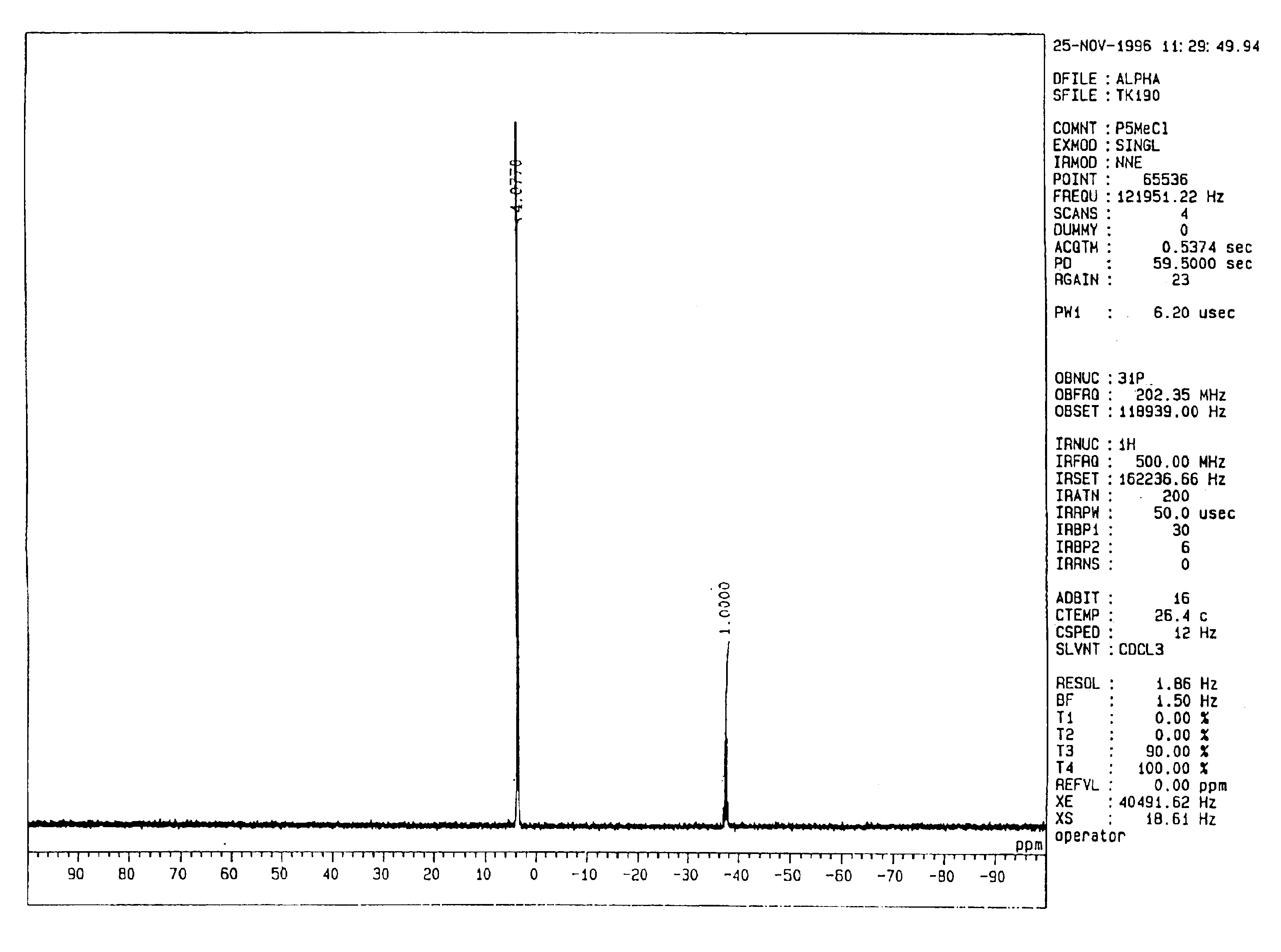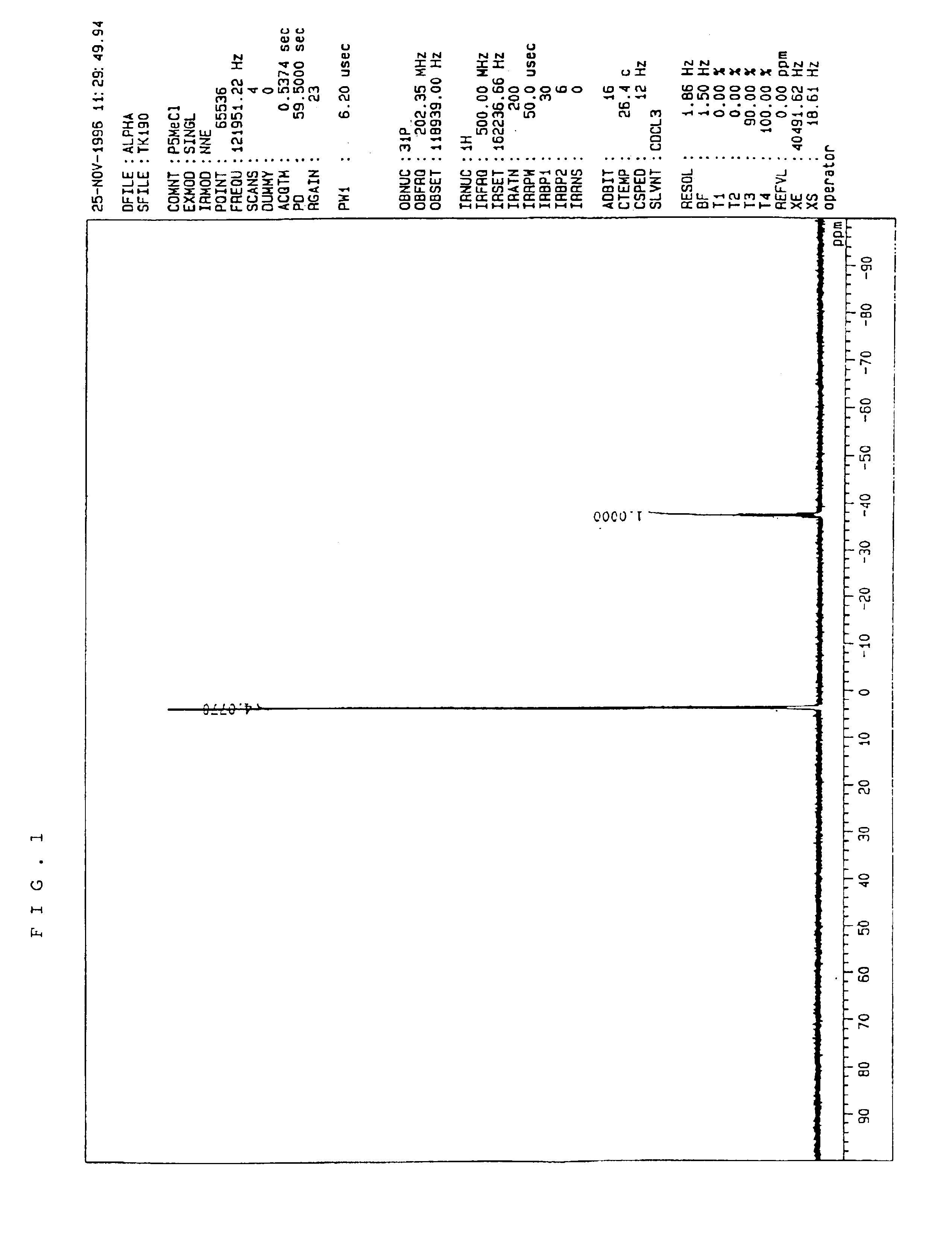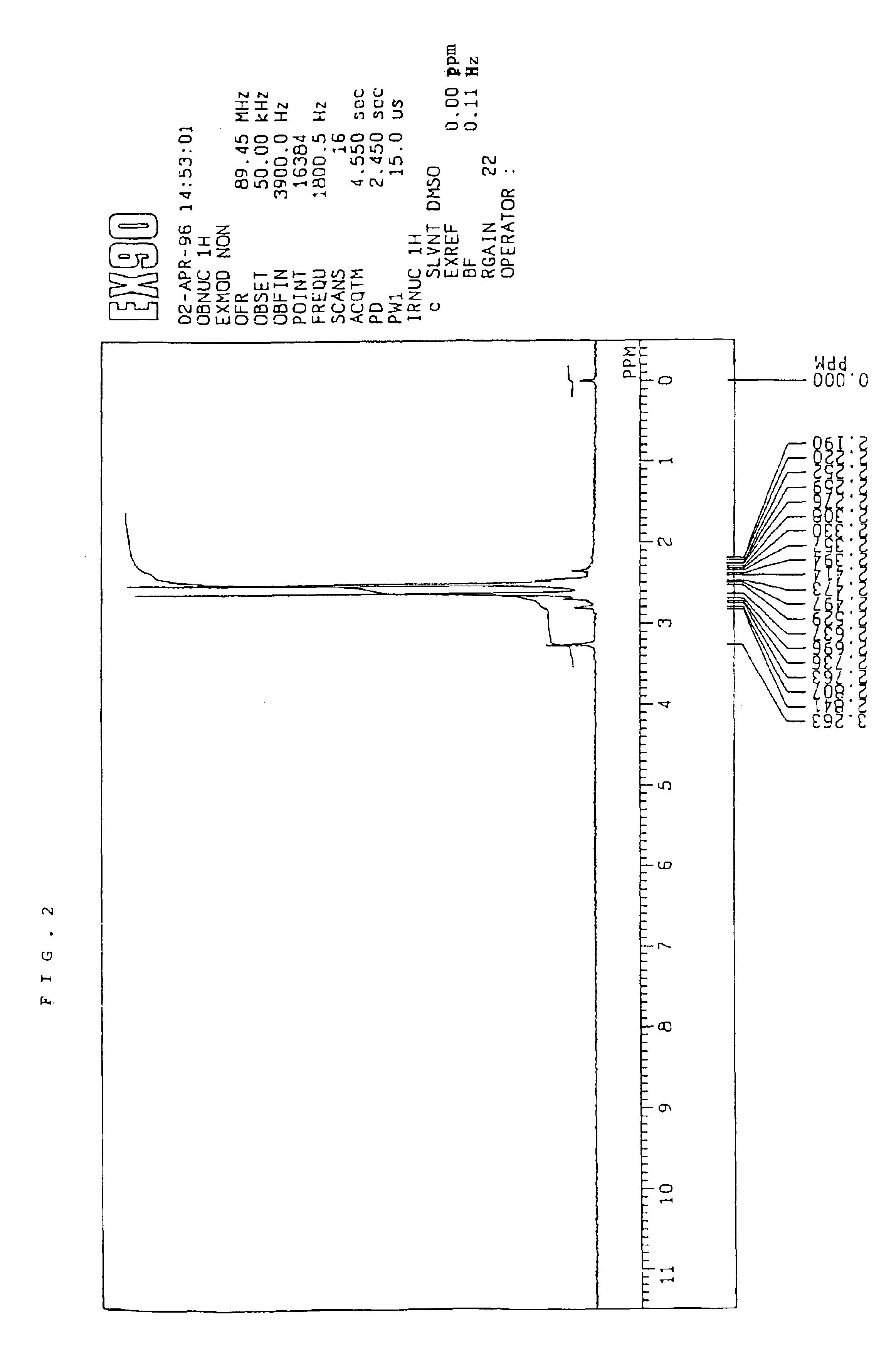Poly (alkylene oxide) prepared in the presence of a phosphazenium salt or compound
- Summary
- Abstract
- Description
- Claims
- Application Information
AI Technical Summary
Benefits of technology
Problems solved by technology
Method used
Image
Examples
example 1
[0171](Synthesis of the Tetrakis[tris(dimethylamino)phosphoranilideneamino]phosphonium Salt of Methanol; [(Me2N)3P═N]4P+(MeO)− (Me Represents a Methyl Group; This Will Hereinafter Apply Equally)
[0172]Sodium hydride (240 mg, 10.0 mmol) was weighed in a 100-ml eggplant-type flask, to which 20 ml of DMSO (which stands for dimethyl sulfoxide; this will hereinafter apply equally) were added to form a suspension. The suspension was heated at 80° C. for 1 hour so that a homogeneous solution of a green color was obtained. Methanol (320 mg, 10.0 mmol) was added to this solution at 0° C. under a nitrogen gas atmosphere so that sodium methoxide was formed. The resultant mixture was stirred for 1 hour, followed by the addition of 7.8 g (10.0 mmol) of tetrakis[tris(dimethylamino)phosphoranilideneamino]phosphonium chloride {[(Me2N)3P═N]4P+Cl−} (product of Fluka Corp.) at room temperature. The thus-obtained mixture was then stirred for 2 hours and was concentrated under reduced pressure to dryness...
example 2
[0173](Synthesis of Dimethylaminotris[tris(dimethylamino)phosphoranilideneamino]phosphonium Tetrafluoroborate; (Me2N)[(Me2N)3P═N]3P+BF4−
[0174]In a 300-ml 3-necked flask fitted with a thermometer and a dropping funnel, 10.0 g (48.0 mmol) of phosphorus pentachloride were weighed, to which 50 ml of THF were added to form a suspension. The suspension was cooled to −70° C., to which a solution of 50.0 g (280.5 mmol) of tris(dimethylamino)phosphazene {(Me2N)3P═NH}, which had been synthesized by the process described on page 1362 of Reinhard Schwesinger, et al. Angew. Chem. Int. Ed. Engl., 32, 1361-1363 (1993), in 90 ml of THF was added dropwise over 1 hour. After the resultant mixture was stirred at the same temperature for 30 minutes, its temperature was allowed to rise back to room temperature over about 30 minutes, followed by stirring for 20 hours. The resultant insoluble matter was filtered off and the filtrate as charged in a 500-ml autoclave. After 46.0 g (1.0 mol) of dimethylamine...
example 3
[0177](Synthesis of Tetrakis[tri(pyrrolidin-1-yl)phosphoranilideneamino]phosphonium Tetrafluoroborate; (Py3P═N)4P+BF4−, (Py Represents a Pyrrolidin-1-yl Group; This Will Hereinafter Apply Equally)
[0178]In a 200-ml 3-necked flask fitted with a thermometer and a dropping funnel, 1.6 g (7.8 mmol) of phosphorus pentachloride were weighed, to which 20 ml of THF were added to form a suspension. The suspension was cooled to −70° C., to which a solution of 20.0 g (78.0 mmol) of tri(pyrrolidin-1-yl)phosphazene (Py3P═NH) in 20 ml of THF was added dropwise over 1 hour. After the resultant mixture was stirred at the same temperature for 30 minutes, its temperature was allowed to rise back to room temperature over about 30 minutes, followed by stirring for 12 hours. The THF was distilled off under reduced pressure, followed by a reaction at 110° C. for 41 hours. The reaction mixture was allowed to cool down to room temperature, to which 100 ml of a 70% aqueous solution of monoethylamine were add...
PUM
| Property | Measurement | Unit |
|---|---|---|
| Temperature | aaaaa | aaaaa |
| Temperature | aaaaa | aaaaa |
| Fraction | aaaaa | aaaaa |
Abstract
Description
Claims
Application Information
 Login to View More
Login to View More - R&D
- Intellectual Property
- Life Sciences
- Materials
- Tech Scout
- Unparalleled Data Quality
- Higher Quality Content
- 60% Fewer Hallucinations
Browse by: Latest US Patents, China's latest patents, Technical Efficacy Thesaurus, Application Domain, Technology Topic, Popular Technical Reports.
© 2025 PatSnap. All rights reserved.Legal|Privacy policy|Modern Slavery Act Transparency Statement|Sitemap|About US| Contact US: help@patsnap.com



